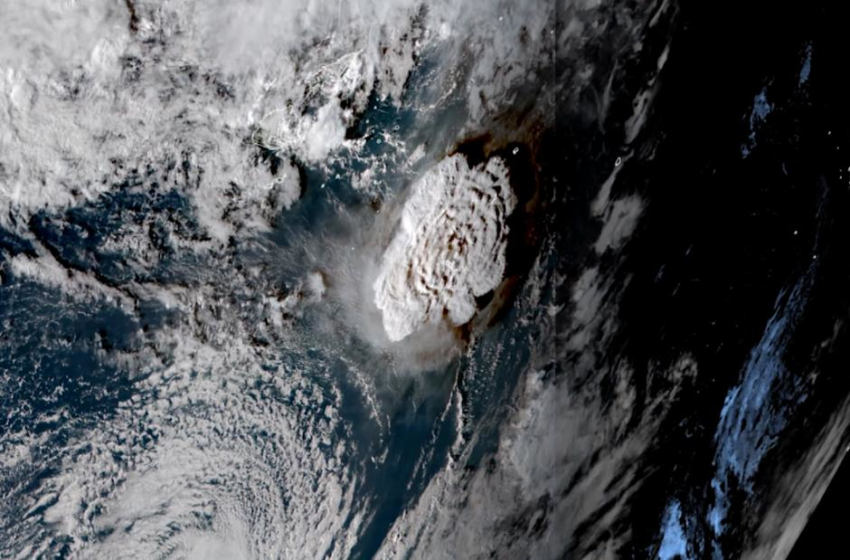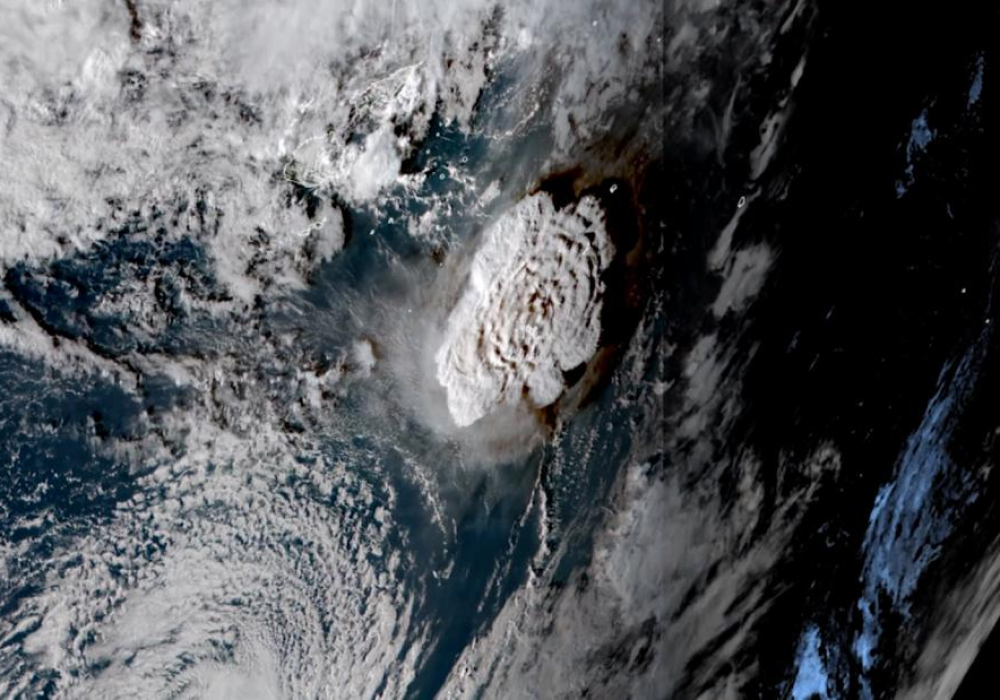Satellite imagery shows a massive ash cloud and shockwaves spreading from the eruption.
Waves crossed the shoreline of Tonga’s capital, Nuku’alofa, on Saturday, flowing onto coastal roads and flooding properties, according to CNN affiliate Radio New Zealand (RNZ).
A tsunami warning has been issued for the islands of Tonga. Tsunami advisories have also been issued as far away as New Zealand’s North Island.
The Hunga-Tonga-Hunga-Ha’apai volcano first erupted Friday, sending a plume of ash 20 kilometers (12.4 miles) into the air, according to RNZ.
A second eruption hit on Saturday at 5:26 p.m. local time, RNZ reported.
Australia’s Bureau of Meteorology said it recorded a tsunami wave of 1.2 meters (about 4 feet) near Nuku’alofa at 5:30 p.m. local time on Saturday.
Ash was falling from the sky in Nuku’alofa on Saturday evening and phone connections were down, RNZ said.
The volcano is located about 30 kilometers (18.6 miles) southeast of Tonga’s Fonuafo’ou island, according to RNZ.
In addition to the tsunami warning, Tonga’s Meteorological Services have issued advisories for heavy rain, flash flooding and strong winds in lands and coastal waters.
The nearby island of Fiji has also issued a public advisory asking people living in low lying coastal areas to “move to safety in anticipation of the strong currents and dangerous waves.”
A tsunami watch is in effect for all Samoan low-lying coastal areas, the Samoa Meteorological Service said. “All people living on low-lying coastal areas are advised to stay away from beach areas,” the agency said, and the public should refrain from visiting coastal areas.
A tsunami advisory has also been issued for coastal areas on the north and east coast of New Zealand’s North Island and the Chatham Islands, where “strong and unusual currents and unpredictable surges at the shore” are expected, according to New Zealand’s National Emergency Management Agency.
New Zealand’s official weather service said its weather stations across the country had observed “a pressure surge” on Saturday evening from the eruption.
An earlier tsunami warning issued for American Samoa has since been canceled, according to the NWS Pacific Tsunami Warning Center.
There is no tsunami threat to Guam and the Commonwealth of the Northern Mariana Islands from a “distant eruption,” according to the Pacific Tsunami Warning Center.
The volcano had been active from December 20, but was declared dormant on January 11, according to RNZ.





